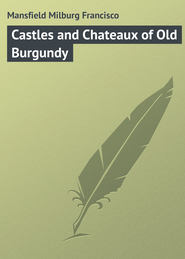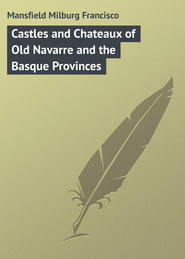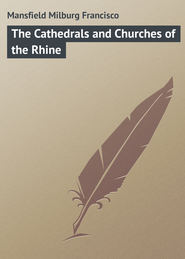По всем вопросам обращайтесь на: info@litportal.ru
(©) 2003-2024.
✖
The Automobilist Abroad
Настройки чтения
Размер шрифта
Высота строк
Поля
In most countries the passport is no longer a necessary document in the traveller's pocketbook, though the Britisher still fondly arms himself with this "protection," and the American will, if it occurs to him, be only too glad to contribute his dollars to the fees of his consulate or embassy in order to possess himself of a gaudy thing in parchment and gold which he can wave in front of any one whom he thinks transgresses his rights as an American citizen: "from the land of liberty, and don't you forget it."
This is all very well and is no doubt the very essence of a proper patriotism, but the best pièce d'identité for the foreigner who takes up his residence in France for more than three months is a simple document which can be obtained from the commissaire de police. It will pass him anywhere in France that a passport will, is more readily understood and accepted by the banker or post-office clerk as a personal identification, and will save the automobile chauffeur many an annoyance, if he has erred through lack of familiarity with many little unwritten laws of the land.
The automobilist en tour always has the identification papers of his automobile; in England his "License," and in France his "Certificat de Capacité" and "Récépisse de Déclaration," which will accomplish pretty much all the passport of other days would do if one flourished it to-day before a stubborn octroi official or the caretaker of a historical monument.
The membership card of the Italian, Swiss, or French touring clubs will do much the same thing, and no one should be without them, since membership in either one or all is not difficult or costly. (See Appendix.)
France is the land par excellence for the tourist, whether by road or rail. The art of "le tourisme" has been perfected by the French to even a higher degree than in Switzerland. There are numerous societies, clubs, and associations, from the all-powerful Touring Club de France downward, which are attracting not only the French themselves to many hitherto little-known corners of "la belle France," but strangers from over the frontiers and beyond the seas. These are not the tourists of the conventional kind, but those who seek out the little-worn roads. It is possible to do this if one travels intelligently by rail, but it is a great deal more satisfactorily done if one goes by road.
Here and there, scattered all over France, in Dauphiné, in Savoie, and in the Pyrenees, one finds powerful "Syndicats d'Initiative," which not only care for the tourist, but bring pressure to bear on the hotel-keeper and local authorities to provide something in the way of improvements, where they are needed, to make a roadway safe, or to restore a historical site or monument.
In the Pyrenees, and in the Alps of Savoie and Dauphiné, one finds everywhere the insignia of the "Club-Alpin Français," which caters with information, etc., not only to the mountain-climber, but to the automobilist and the general tourist as well.
More powerful and effective than all – more so even than the famous Automobile Club de France – is the great Touring Club de France, which, with the patronage of the President of the Republic, and the influence of more than a hundred thousand members, is something more than a mere touring club.
In the fourteen years of its existence not only has the Touring Club de France helped the tourist find his way about, but also has taken a leading part in the clearing away of the debris in many a moss-grown ruin and making of it a historical monument as pleasing to view as Jumièges on the Seine, or world-famed Les Baux in Provence.
It has appointed itself the special guardian of roads and roadways, so far as the placing of signboards along the many important lines of communication is concerned; it has been the means of having dug up untold kilometres of Renaissance pavement; has made, almost at its own expense, a magnificent forty-kilometre road known as the Corniche de l'Esterel; and has given the backward innkeeper such a shock that he has at last waked up to the needs of the twentieth-century traveller. All this is something for a touring organization to have accomplished, and when one can become a part and parcel of this great organization, and a sharer in the special advantages which it has to offer to its members for the absurdly small sum of five francs per annum, the marvel is that it has not half a million members instead of a hundred thousand.
Chapter III
Roads & Routes
The chief concern of the automobilist to-day, after his individual automobile, is the road question, the "Good Roads Question," as it has become generally known. In a new country, like America, it is to be expected that great connecting highways should be mostly in the making. It is to be regretted that the development should be so slow, but things have been improving in the last decade, and perhaps America will "beat the world" in this respect, as she has in many others, before many future generations have been born.
In the excellence and maintenance of her roads France stands emphatically at the head of all nations, but even here noticeable improvement is going on. The terrific "Louis Quatorze pavé," which one finds around Paris, is yearly growing less and less in quantity. The worst road-bed in France is that awful stretch from Bordeaux, via Bazas, to Pau in Navarre, originally due to the energy of Henri IV., and still in existence for a space of nearly a hundred kilometres. One avoids it by a détour of some twenty odd kilometres, and the writer humbly suggests that here is an important unaccomplished work for the usually energetic road authorities of France.
After France the "good roads" of Britain come next, though in some parts of the country they are woefully inadequate to accommodate the fast-growing traffic by road, notably in London suburbs, while some of the leafy lanes over which poets rhapsodize are so narrow that the local laws prevent any automobile traffic whatever. As one unfortunate individual expressed it, "since the local authorities forbid automobiles on roadways under sixteen feet in width, I am unable to get my motor-car within nine miles of my home!"
In England something has been done by late generations toward roads improvement. The first awakening came in 1820, and in 1832 the London-Oxford road had been so improved that the former time of the stage-coaches had been reduced from eight to six hours. Macadam in 1830, and Stevenson in 1847, were the real fathers of the "Roads Improvement Movement" in England. The great faults of English roads are that they are narrow and winding, almost without exception. There are 38,600 kilometres of highways (the figures are given on the metric scale for better comparison with Continental facts and figures) and 160,900 of by-roads. There are sixty-six kilometres of roads to the square kilometre (kilometre carré).
In Germany the roads system is very complex. In Baden, the Palatinate, and the Grand Duchy of Hesse they cede nothing to the best roads anywhere, but in the central and northern provinces they are, generally speaking, much poorer. There are fifty-four kilometres of roads of all grades to the kilometre carré.
In Belgium the roads are greatly inferior to those of France, and there are immeasurable stretches of the vilest pavement the world has known, not only near the large towns, but great interior stretches as well. There are 17,500 kilometres of Chemins Vicinaux and 6,990 kilometres of Chemins de Grands Communications. They average, taken together, eighty-three kilometres to the kilometre carré.
In Switzerland the roads are thoroughly good everywhere, but many, particularly mountain-roads, are entirely closed to automobile traffic, and the regulations in many of the towns are so onerous that it is anything but agreeable to make one's way through them. There are thirty-two kilometres to the kilometre carré. The Simplon Pass has only recently (1906) been opened to automobile traffic. No departure can be made from Brigue, on the Swiss side, or from Gondo, in Italy, after three P.M. Speed (vitesse) must not exceed ten kilometres on the stretches, or two kilometres around the corners. Fines for infringement of the law run from twenty to five hundred francs.
Italy, with a surface area one-half that of France, has but a quarter of the extent of the good roads. They are of variable quality, but good on the main lines of travel. In the ancient kingdom of Sardinia will be found the best, but they are poor and greatly neglected around Naples, and, as might be expected, in Sicily.
In Austria the roads are very variable as to surface and maintenance, and there are numerous culverts or canivaux across them. There are 21,112 kilometres of national roads, 66,747 kilometres of provincial roads, and 87,859 of local roads. They average fourteen kilometres to the kilometre carré.
The history of the development of the modern roadway is too big a subject to permit of its being treated here; suffice it to recall that in England and France, and along the Rhine, the lines of the twentieth-century main roads follow the Roman roads of classic times.
In France, Lyons, in the mid-Rhône valley, was a great centre for the radiating roadways of Gaul. Strategically it was important then as it is important now, and Roman soldiery of the past, as the automobilist of to-day, had here four great thoroughfares leading from the city. The first traversed the valleys of the Rhine and the Meuse; the second passed by Autun, Troyes, Chalons, Reims, Soissons, Noyon, and Amiens; the third branched in one direction toward Saintes, and in another to Bordeaux; while the fourth dropped down the Rhône valley direct to Marseilles.
More than thirty thousand kilometres of roadways were in use throughout Gaul during the Roman occupation, of which the four great routes (viæ publicæ) formed perhaps four thousand.
Of the great highways of France, the Grandes Routes Nationales, of which all travellers by road have the fondest and most vivid memories, it is well to recall that they were furthered, if not fathered, by none other than Napoleon, who, for all he laid waste, set up institutions anew which more than compensated for the destructions.
The great roadways of France, such as the Route de Bretagne, running due west from the capital, and those leading to Spain, Switzerland, Italy, and the Pays Bas, had their origin in the days of Philippe-Auguste. His predecessors had let the magnificently traced itineraries of the Romans languish and become covered with grass – if not actually timber-grown.
The arrangement and classification laid down by Philippe-Auguste have never been changed, simply modified and renamed; thus the Routes Royales– such as followed nearly a straight line from Paris by the right bank of the Loire to Amboise and to Nantes – became the Routes Nationales of to-day.
Soon wheeled traffic became a thing to be considered, and royal cortèges moved about the land with much the same freedom and stateliness of the state coaches which one sees to-day in pageants, as relics of a past monarchical splendour.
Louis XI. created the "Service des Postes" in France, which made new demands upon the now more numerous routes and roadways, and Louis XII., François I., Henri II., and Charles IX., all made numerous ordinances for the policing and maintenance of them.
Henri IV., and his minister Sully, built many more of these great lines of communication, and thus gave the first real and tangible aid to the commerce and agriculture of the kingdom. He was something of an aesthetic soul too, this Henri of Bearn, for he was the originator of the scheme to make the great roadways of France tree-shaded boulevards, which in truth is what many of them are to-day. This monarch of love, intrigues, religious reversion, and strange oaths passed the first (and only, for the present is simply a continuance thereof) ordonnance making the planting of trees along the national highroads compulsory on the local authorities.
Under Louis XIV., Colbert continued the good work and put up the first mile-stone, or whatever its equivalent was in that day, measuring from the Parvis de Notre Dame at Paris. Some of these Louis XIV. bornes, or stones, still exist, though they have, of course, been replaced throughout by kilometre stones.
The foregoing tells in brief of the natural development of the magnificent roads of France. Their history does not differ greatly from the development of the other great European lines of travel, across Northern Italy to Switzerland, down the Rhine valley and, branching into two forks, through Holland and through Belgium to the North Sea.
In England the main travel routes run north, east, south, and west from London as a radiating centre, and each took, in the later coaching days, such distinctive names as "The Portsmouth Road," "The Dover Road," "The Bath Road," and "The Great North Road." Their histories have been written in fascinating manner, so they are only referred to here.
It is in France, one may almost say, that automobile touring begins and ends, in that it is more practicable and enjoyable there; and so la belle France continually projects itself into one's horizon when viewing the subject of automobilism.
It may be that there are persons living to-day who regret the passing of the good old times when they travelled – most uncomfortably, be it remarked – by stage-coach and suffered all the inclemencies of bad weather en route without a word of protest but a genial grumble, which they sought to antidote by copious libations of anything liquid and strong. The automobile has changed all this. The traveller by automobile doesn't resort to alcoholic drinks to put, or keep, him in a good humour, and, when he sees a lumbering van or family cart making its way for many miles from one widely separated region to another, he accelerates his own motive power and leaves the good old ways of the good old days as far behind as he can, and recalls the words of Sidney Smith:
"The good of other times let others state,
I think it lucky I was born so late."
A certain picturesqueness of travel may be wanting when comparing the automobile with the whirling coach-and-four of other days, but there is vastly more comfort for all concerned, and no one will regret the march of progress when he considers that nothing but the means of transportation has been changed. The delightful prospects of hill and vale are still there, the long stretches of silent road and, in France and Germany, great forest routes which are as wild and unbroken, except for the magnificent surface of the roads, as they were when mediæval travelers startled the deer and wild boar. You may even do this to-day with an automobile in more than one forest tract of France, and that not far from the great centres of population either.
The invention of carriage-springs – the same which, with but little variation, we use on the automobile – by the wife of an apothecary in the Quartier de St. Antoine at Paris, in 1600, was the prime cause of the increased popularity of travel by road in France.
In 1776, the routes of France were divided into four categories:
1. Those leading from Paris to the principal interior cities and seaports.
2. Those communicating directly between the principal cities.
3. Those communicating directly between the cities and towns of one province and those of another.
4. Those serving the smaller towns and bourgs.
Those in the first class were to be 13.35 metres in width, the second 11.90, the third 10, the fourth 7.90. The road makers and menders of England and America could not get better models than these.
The advent of the automobile has brought a new factor into the matter of road making and mending, but certainly he would be an ignorant person indeed who would claim that the automobile does a tithe of the road damage that is done by horse-drawn traffic.
At a high rate of speed, however, the automobile does raise a fine sandy dust, and exposes the macadam. A French authority states that up to twenty to twenty-five kilometres an hour the automobile does little or no harm to the roads, but when they increase to over fifty kilometres an hour they do damage the surface somewhat. Just what the ultimate outcome of it will be remains to be seen, but France is unlikely to do anything which will work against the interests of the automobilist.
In consequence of this newer and faster mode of travelling, it is being found that on some parts of the roads the convexity of the surface is too great, and especially at curves, where fast motors frequently skid on the rounded surface. To obviate this a piece of road near the Croix d'Augas in the Orleannais has had the outer side of the curve raised eight centimetres above the centre of the road, in somewhat the same manner as on the curve of a railway. Since this innovation has proved highly successful and pleasing to the devotees of the new form of travel, it is likely to be further adopted.
In the early period of the construction of French roads the earth formation was made horizontal, but Trésaguet, a French engineer, introduced the rounded form, or camber, and this is the method now almost generally adopted, both in France and England. Only some 14,000 kilometres of the national routes have a hand-set foundation, the others being what are termed broken-stone roads – the stone used is broken in pieces and laid on promiscuously, after the system introduced by Macadam. Some of the second and third class, roads are constructed of gravel, and others, of earth.
From the official report of 1893 it appears that the cost of maintenance of roads in France was as follows:











